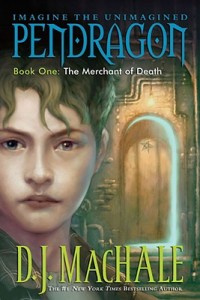The Bartimaeus Trilogy by Jonathan Stroud
Book One, The Amulet of Samarkand, Hyperion Books for Children, 2003, 462 pages.
Worldview: Dark. In a world where moral behavior is nearly unknown, the protagonist and his genie occasionally demonstrate moral behavior. More often, they don’t.
This book is a well-written high-action story that appeals to boys. It is told from two points of view: the Djinn (genie) Bartimaeus (apparently just a coincidence that this is a Biblical name) and the young magician’s apprentice Nathaniel. This fantasy world contains a version of London that is vaguely familiar but still very different. It is ruled by powerful evil magicians, who take in apprentices rather than producing children of their own. Everyone is jockeying for power, including non-magicians.
But in fact all the magicians’ powers depend on their ability to control demons. Using special glasses or contact lenses, they can see the demons. So the magicians don’t have special powers of their own. They just learn incantations while they are apprentices.
Into this mix comes Nathaniel, age 12, a boy genius who mouths off and is disciplined by his master’s magician acquaintance Simon Lovelace. Nathaniel conceives a plan for revenge. In fact, revenge appears to be Nathaniel’s primary motivator throughout the book.
As a result of Nathaniel’s theft of Lovelace’s amulet, Lovelace kills Nathaniel’s master and his wife. Then Lovelace sets out to kill all the magicians in the government. Nathaniel and Bartimaeus foil him. In the process Nathaniel does plenty of lying and stealing. Flashes of conscience, coming from who knows where, lead him to own up to stealing the amulet, but don’t keep him from seeking revenge.
Nathaniel’s character doesn’t seem to change as the plot develops. In fact, at the end he is placed under the tutelage of another evil magician, and we wonder whether any flashes of conscience will redeem him in the future. Bartimaeus is able to persuade Nathaniel to keep his word and release Bartimaeus from service, but only with great difficulty.
Bartimaeus’s character starts out as undeniably demonic, wishing evil on all the human race. He’s also got irreverent wit, a bit like the genie in the movie Aladdin. Bartimaeus’parts of the book are told in the first person, so we can see his thoughts. But eventually he softens up somewhat. At the end he even commends Nathaniel for having a conscience, and tells him to guard it. Now, where this character change came from isn’t obvious. The high-action tale doesn’t show why a demon would change in this manner.
This is another high-action fantasy tale without merit.–Phyllis Wheeler
![]()

